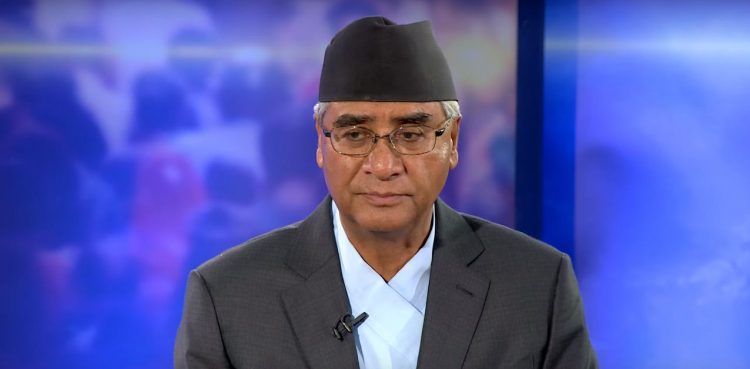Elderly allowance at 65 won’t benefit senior citizens from districts with lowest life expectancy and Dalits
Sujit Mainali / February 23, 2018

Source: Youtube/SajhaSawal
Lower life expectancy may not necessarily mean fewer elderly people
The immediate past government led by Nepali Congress President Sher Bahadur Deuba in January decided to reduce the age bar for elderly allowance to 65 from 70 years. Many criticized the decision as impractical. In defense of his decision, Deuba during his last address to the nation as prime minister on February 15 said the following:
“Life expectancy in more than 50 districts of Nepal is below 70 years. In this context, the state has decided to reduce the age bar for elderly allowance to 65 out of respect to the elderly and to help them with their livelihoods.”
Many Nepali Congress leaders are defending the decision saying that life expectancy in many districts is below 70 and many people from such districts will benefit from the decision.
It may be noted that four of the five districts with lowest life expectancy are in the Karnali zone. But in the Karnali zone, people aged 60 years and above have already been receiving elderly allowance, long before the Deuba government’s decision to reduce the age to 65.
Nepal’s Dalit community has the lowest life expectancy (67.19 years) among all communities. And just like the residents of the Karnali zone, the Dalits of 60 years and above across the country have been receiving the elderly allowance.
‘Social Security Program Implementation Guidelines, 2072’ has defined the ‘senior citizen’ as a Nepali national aged 60 or above if he/she is a Dalit or resides within the Karnali zone, and aged 70 if he/she is non-Dalit and lives elsewhere.
Therefore, the decision of the Deuba-led government does not benefit the senior citizens from four of the five districts with lowest life expectancy, and the Dalit community.
The aforementioned decision appears to be the result of a general belief that the number of senior citizens in districts with higher life expectancy is higher and vice versa. But a study of relevant data by South Asia Check found that there may not necessarily be a correlation between life expectancy and the number of elderly.
For example, Saptari, Siraha and Rauthat are the second, third and fifth districts of Nepal with highest life expectancy. But the percentage of elderly (people of 70 and above) in these districts is less than the percentage of the elderly in five districts (Bajura, Pyuthan, Manang, Mustang and Bajhang) with lowest life expectancy (except for the districts in Karnali zone). The percentages of elderly in Saptari and Mustang districts are 2.74 and 4.74 respectively.
This material is copyrighted but may be used for any purpose by giving due credit to southasiacheck.org.
Comments
Latest Stories
- In Public Interest Covid-19 cases are low, but that’s not an excuse to avoid vaccination
- In Public Interest What is BF.7, the sub-variant that has the world by its grip?
- In Public Interest Threat of a new Covid-19 wave looms large amid vaccine shortage in Nepal
- In Public Interest As cases decline, Covid-19 test centres in Kathmandu are desolate lot
- In Public Interest Dengue test fee disparity has patients wondering if they’re being cheated
- In Public Interest As dengue rages on, confusion galore about what it is and what its symptoms are. Here’s what you need to know
In Public Interest
 Covid-19 cases are low, but that’s not an excuse to avoid vaccination
The Pfizer-BioNTech bivalent vaccines authorised by the Nepal Government provide better protection a...
Read More
Covid-19 cases are low, but that’s not an excuse to avoid vaccination
The Pfizer-BioNTech bivalent vaccines authorised by the Nepal Government provide better protection a...
Read More
- What is BF.7, the sub-variant that has the world by its grip?
- Threat of a new Covid-19 wave looms large amid vaccine shortage in Nepal
- As cases decline, Covid-19 test centres in Kathmandu are desolate lot
- Dengue test fee disparity has patients wondering if they’re being cheated
- As dengue rages on, confusion galore about what it is and what its symptoms are. Here’s what you need to know